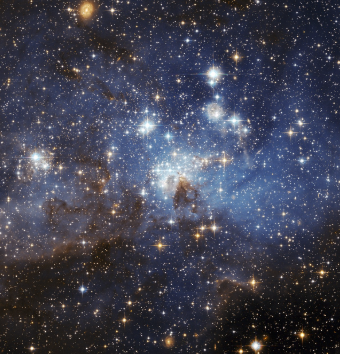
Making homes on other planets seems like a dream. But there are some companies like SpaceX taking on the challenge by colonizing Mars. But Mars is a radioactive, cold, defenseless planet that seems like the best we can do is build tunnels underground with no light or entertainment with depressed humans all around it. But what if we look closer to the sun? Not Mercury, not a moon, but Venus. The hottest planet in the solar system, compared to Mars, looks like it will not even be able to get a landing on it. But we are after more than just landing on it, we will be looking at terraforming it (please see definitions of the boldfaced vocabulary in the glossary below).
 First, before we start terraforming it, we need to understand what it’s like on Venus. Venus is 460 degrees C (860 degrees F), hot enough to melt lead. The air pressure is 93 bar with 97% CO2. Standing on its surface would be about taking a 900-meter (984.252 yards) dive in the ocean as the water is over 4 times as hot as if it was boiling. Technically, you would probably be dead if you landed on the surface. So why should we terraform Venus instead of going with Mars? Well, it is about the same size as Earth, meaning we would have more room than we would have on Mars. It also has 90% of Earth’s surface gravity, unlike Mars. It would be a great planet with oceans and forests. It would be the second-largest habitable planet in the solar system. It would take hundreds of years, if not thousands, to do it. But the great pyramids also took thousands of years to build.
First, before we start terraforming it, we need to understand what it’s like on Venus. Venus is 460 degrees C (860 degrees F), hot enough to melt lead. The air pressure is 93 bar with 97% CO2. Standing on its surface would be about taking a 900-meter (984.252 yards) dive in the ocean as the water is over 4 times as hot as if it was boiling. Technically, you would probably be dead if you landed on the surface. So why should we terraform Venus instead of going with Mars? Well, it is about the same size as Earth, meaning we would have more room than we would have on Mars. It also has 90% of Earth’s surface gravity, unlike Mars. It would be a great planet with oceans and forests. It would be the second-largest habitable planet in the solar system. It would take hundreds of years, if not thousands, to do it. But the great pyramids also took thousands of years to build.
First, we need to take care of the carbon dioxide (CO2). We could do this by freezing it and shooting the CO2 into outer space. To freeze the CO2, we could build multiple angled slants of mirrors in the front and one in the back to balance the force on both sides. We would not have just one mirror because then, solar wind would push it out of position. After roughly 200 years, the planet is covered in frozen CO2 oceans with mostly nitrogen in the atmosphere at about 3 bar. Next, we would mine all the frozen CO2 and launch it into a moon for storage. We could also use this time to launch extra Nitrogen out of the atmosphere.
Next, we need water and light. To get water, we could take it from moons like Europa. But transporting water from a moon by Jupiter and launching it to Venus would not be easy. But you know what would be easy? Checking out my last article about the iPhone 15 vs the iPhone 14. Anyway, let us get back on track. We could have an army of drones cut out chunks of ice and launch them at Venus. We could also do this with some asteroids as well. Then, we would need light. If we removed our mirrors, we would cook half of the planet because of how long a day on Venus is. Instead, we can add manual light in many ways. An effective way of doing this would be to make another mirror revolve around Venus, creating light similar to Earth.
Finally, we would need a breathable atmosphere and life. Right now, we have oceans with nothing in them and a pretty desert-like ground with still a 99% nitrogen atmosphere. So, the first life forms would probably be cyanobacteria. We would use cyanobacteria because it can turn Venus’s atmosphere into a rich oxygen atmosphere like Earth’s. They can also take the nitrogen and turn it into nutrients animals can use. They can also transform the dead ocean water and turn it into an ocean ready for more sophisticated marine life. Meanwhile, we would need to create soil. We could grind down the rock or build lasers and rapidly fire them at areas to break up the surface. After that, we could plant forests and add animals. But it would still take many, many years to make it breathable for us.
To conclude, Venus is a place that has unbearable temperatures, enough air pressure to make you explode, and almost no aspects of a Planet B. But looking at this article, it seems possible and it may even sound likely to some of you. And some of you might think I’m crazy. Either way, it still is possible and can be done soon if we are truly dedicated enough, Which leads to the final question, do you think it’s possible to Terraform Venus?
Glossary
Terraform – transform (a planet) so as to resemble the earth, especially so that it can support human life.
Bar – Air pressure measurement equivalent to earth’s air pressure.
CO2 – a molecule that in gas form traps heat. Made from Carbon and Oxygen.
Nitrogen – a gas found in earth’s atmosphere that does not burn and freezes at very low temperatures.
Works Cited
How To Terraform Venus (Quickly)
YouTube, 2 March 2023, https://www.youtube.com/watch?v=G-WO-z-QuWI&t=539s. Accessed 12 December 2023.
Griffith, Kieran. “Can Terraforming Venus Be The Solution To Population Growth?” Singularity Weblog, 18 November 2010, https://www.singularityweblog.com/can-terraforming-venus-be-the-solution-to-population-growth/. Accessed 12 December 2023.











